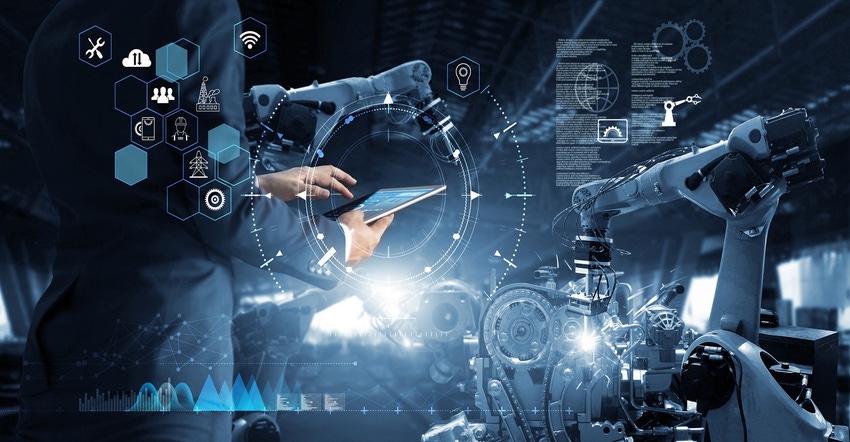The Future of Robots Is Multi-Use Machines
Improved programming, peripherals, and machine vision allow manufacturers to use multi-purpose robots for a range of functions.
August 8, 2023

For decades, robots were built and programmed for a single task – welding or painting. With improved robot technology, manufacturers are now using robots for multiple tasks. The era of single-purpose robots is coming to an end. Manufacturers want to get more than one function from their robots. “The days of having single-purpose robots for specific tasks are behind us,” Pablo Molina, chairman and CTO at Avidbots said in IEEE Spectrum. “A robot must be multi-functional to solve today’s challenges, be cost-effective, and increase the productivity of an organization.”
Design News will present a free webinar on the topic on Thursday, August 17 at 2 pm: The Growth of Multi-Purpose Robots. The webinar will look at how machine vision and artificial intelligence have allowed robots to become more advanced and perform in non-traditional industry areas.
To gain a wider perspective on multi-use robots, we caught up with Joe Campbell, principal of JE Campbell Industrial Marketing and former marketing manager at Universal Robots, to get his view on using robots for multiple tasks.
Do you see more robots designed for multiple purposes?
Joe Campbell: I don't see robots specifically designed for multiple applications - but I do see real improvements in programming, peripherals, and deployment that make multiple uses practical and economically feasible. And I see cases where collaborative robots are used as a manufacturing tool, moved from machine to machine depending on the production plan for the day. Most of these installations involve the cobot staying within a single application area, such as loading and unloading a machine tool. But the parts will change, the machine tool will change, and the program will change. This is just not practical with traditional automation, but I have seen it routinely from Universal Robot customers.
Are multi-purpose robots a more affordable way to deploy automation?
Joe Campbell: It's all about utilization - is the automation investment working for you every shift? The traditional automation approach was a 1:1 ratio of robot to machine, robot to weldment, or robot to assembly process. If that part wasn't being produced on a given day, utilization took a real hit as the robot/machine sat idle. The collaborative model pioneered by Universal Robots supports rapid re-deployment to a different machine or process with minimal time and effort. That keeps the cobot utilization high and helps drive very fast ROI.
In some cases, the cobot is applied in widely divergent applications. Flywheel supply is a great example. To drive the ROI on this project, the Universal Robot cobot alternates between machine tending and TIG welding - not a typical mix.
What type of functionality do you see in multi-purpose robots? Vision systems combined with pick-and-place? Cleaning robots in retail settings that can also scan shelves depleted products?
Joe Campbell: Improvements in functionality, with very low engineering and programming required, are driving multiple applications. This is the basic premise of the UR+ program from Universal. The burden of integrating a sensor or gripper or software tool is on the developer, not the user or integrator. There are now over 440 UR+ products in the program, bringing far more functionality than UR alone could develop.
Another interesting example comes from the wind turbine industry. Rope Robotics developed the BR-8 Wind Turbine Maintenance robot. It not only cleans and sands the giant blades, but it also applies protective surface finishes, fillers, and paint.
Does AI and machine learning play a role in making robots more flexible?
Joe Campbell: AI has a role in increased flexibility, particularly in processes that previously required months of tedious testing and programming. A great example is from UR+ partner Apera AI, a vision system company that leverages AI to train parts in applications with unstructured orientations and lighting such as bin picking. The previous approach would require hundreds of hours of programming to capture only a portion of the possibilities. The Apera system uses AI to train even the most complex parts with just a few engineering hours.
You May Also Like



